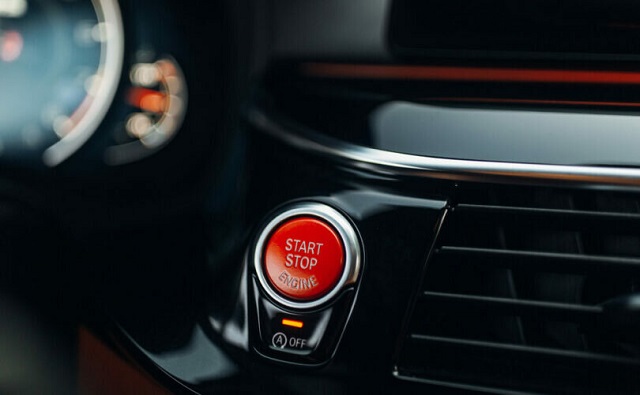Automotive
Vehicle monitoring software could soon use ‘kill switch’ under the guise of ‘safety’

From LifeSiteNews
By Caryn Lipson
Ambiguity surrounds the definitions of ‘impairment’ and the consequent privacy implications of such technology, raising fears of government overreach and erosion of rights.
In the name of safety, the government has taken steps that critics say have denied citizens what used to be considered inalienable constitutional rights.
Citizens are concerned that their right to freedom of speech under the First Amendment is being denied, ostensibly, to keep citizens safe from “harmful misinformation,” and fear that the Second Amendment right to bear arms is being infringed upon to combat gun violence. Watchdogs further contend that citizens are being denied the Fifth Amendment’s protection against self-incrimination and the Sixth Amendment’s right to face one’s accuser when technology is used to gather evidence.
READ: Vietnam’s new biometric ID cards raise fears of privacy violations, data breaches
The fear now is that increased use of technology will soon mean an even greater loss of privacy and further erosion of the Fifth and Sixth Amendments, due to certain provisions in Joe Biden’s infrastructure bill which will soon become mandatory. Under the guise of keeping citizens safe by preventing drunk driving, it may amount to ceding the freedom to travel to government control.
H.R.3684 – Infrastructure Investment and Jobs Act
The infrastructure bill, HR. 3684, passed by both chambers of Congress and signed by Biden on November 15, 2021, includes a provision for several vehicle monitoring technologies to be installed in cars, which have recently or will soon be required in new vehicles, including technology to determine if a driver is drunk or impaired.
The Center for Automotive Research’s Eric Paul Dennis reviewed the bill and summarized “key sections.” Dennis, a senior transportation systems analyst, reviewed the section on “Drunk and Impaired Driving Prevention Technology” (HR 3684 Section 24220) and explained that Congress gave the NHTSA (National Highway Traffic Safety Administration) the role of determining exactly what this section means and how it will be implemented:
This provision directs NHTSA to issue a rule to require ‘advanced drunk and impaired driving prevention technology’ in new light vehicles.
- Congress tasked NHTSA with interpreting this law, including establishing the statutory meaning of ‘impaired.’
- The legislation directs NHTSA to adopt a new safety mandate by 15 November 2024 and begin enforcing it by September 2027 (at the latest) if this is feasible. [Emphases added.]
Impaired driving not defined
Others, such as Michael Satterfield, writing as The Gentleman Racer®, were more detailed in their review of the legislation. Satterfield poured through the 1,039-page infrastructure bill. He agreed that good roads, bridges, and safety are important to automotive enthusiasts, but wrote that he uncovered some concerning legislation “buried deep within HR.3684.” The legislation calls not only for changes in crash testing and advanced pedestrian crash standards but also for a “kill switch” to be standard for all new vehicles by 2026.
Satterfield explained that all new vehicles will be required to have passive monitoring systems for the driver’s behavior and an algorithm will determine if the driver is too impaired to operate the vehicle. If the algorithm decides that the driver is too impaired to operate the car, the program will have some means of taking control of the vehicle. But what constitutes impairment and what the program will actually do was not explained by the legislation, as Satterfield noted:
What is not outlined in the bill is what constitutes impairment, outside of the blood alcohol standard, how does the software determine the difference between being tired and being impaired? Passive blood alcohol testing won’t detect impairment from prescription painkillers or other narcotics.
The bill also doesn’t outline what happens when a vehicle detects a driver may be impaired other than that the system must ‘prevent or limit motor vehicle operation if an impairment is detected’ which is all well and good in a bar’s parking lot. But what will this system do if an ‘impairment is detected’ while traveling at 75 mph on the highway? [Emphasis added.]
Accused by your own car’s surveillance system
Satterfield’s greatest concern was the question of individual privacy that a vehicle that monitors the driver raises, including who will have access to the data, and other issues such as the right not to self-incriminate under the Fifth Amendment and the Sixth Amendment right to face your accuser.
He also expressed concern that most drivers will not be aware of the new technology until it affects them in some way:
Perhaps the most disturbing aspect of the legislation is the lack of detail. The main concerns expressed by many, including former U.S. Rep. Bob Barr, come down to privacy. Who will have access to the data? How long will it be stored? Will this capability be exploitable by third-party or government agencies to shut down vehicles outside of the function of preventing impaired driving?
Privacy concerns and the 5th Amendment’s right to not self-incriminate, and the 6th Amendment’s right to face one’s accuser, have already been used to challenge data collection from license plate readers and redlight cameras. Automakers have little choice but to comply with new federal mandates and the majority of consumers will likely be unaware of this new technology until it impacts them in some way. [Emphasis added.]
Freedom or control?
John Stossel recently interviewed former vintage race car driver Lauren Fix about what she believes are the implications of the soon-to-be-implemented impaired driving technology, as reported on FrontPage Magazine.
READ: High-tech cars are secretly spying on drivers, resulting in insurance rejections: NYT report
Fix pointed out that the algorithm cannot determine what exactly is happening in the car and with the driver and asks Stossel how much control over his life he is willing to give up:
Are you willing to give up every bit of control of your life? Once you give that up, you have no more freedom. This computer decides you can’t drive your vehicle. Great. Unless someone’s having a heart attack and trying to get to the hospital.
California, Fix pointed out, already requires vehicle software to limit excess speed to 10 miles over the limit, legislation about which Frontline News reported.
Fix also revealed to Stossel that some companies already collect and sell driver data and proceeded to outline further abuses that could occur as a result of computer surveillance technology, such as charging for mileage or monitoring your “carbon footprint” and deciding that you maxed out on your monthly carbon credits so you can’t drive anymore until the following month. Or perhaps the car won’t start because the software determines you may be on your way to purchase a firearm.
What about hackers?
Can hackers access a vehicle’s software and take control of someone’s car? This possibility is another worrying aspect of the infrastructure bill, which Frontline News will discuss in an upcoming report.
Reprinted with permission from America’s Frontline News.
Automotive
Power Struggle: Governments start quietly backing away from EV mandates

From Resource Works
Barry Penner doesn’t posture – he brings evidence. And lately, the evidence has been catching up fast to what he’s been saying for months.
Penner, chair of the Energy Futures Institute and a former B.C. environment minister and attorney-general, walked me through polling that showed a decisive pattern: declining support for electric-vehicle mandates, rising opposition, and growing intensity among those pushing back.
That was before the political landscape started shifting beneath our feet.
In the weeks since our conversation, the B.C. government has begun retreating from its hardline EV stance, softening requirements and signalling more flexibility. At the same time, Ottawa has opened the door to revising its own rules, acknowledging what the market and motorists have been signalling for some time.
Penner didn’t need insider whispers to see this coming. He had the data.

Barry Penner, Chair of the Energy Futures Institute
B.C.’s mandate remains the most aggressive in North America: 26 per cent ZEV sales by 2026, 90 per cent by 2030, and 100 per cent by 2035. Yet recent sales paint a different picture. Only 13 per cent of new vehicles sold in June were electric. “Which means 87 per cent weren’t,” Penner notes. “People had the option. And 87 per cent chose a non-electric.”
Meanwhile, Quebec has already adjusted its mandate to give partial credit for hybrids. Polling shows 76 per cent of British Columbians want the same. The trouble? “There’s a long waiting list to get one,” Penner says.
Cost, charging access and range remain the top barriers for consumers. And with rebates shrinking or disappearing altogether, the gap between policy ambition and practical reality is now impossible for governments to ignore.
Penner’s advice is simple, and increasingly unavoidable: “Recognition of reality is in order.”
- Now watch Barry Penner’s full video interview with Stewart Muir on Power Struggle here:
Automotive
The high price of green virtue

By Jerome Gessaroli for Inside Policy
Reducing transportation emissions is a worthy goal, but policy must be guided by evidence, not ideology.
In the next few years, the average new vehicle in British Columbia could reach $80,000, not because of inflation, but largely because of provincial and federal climate policy. By forcing zero-emission-vehicle (ZEV) targets faster than the market can afford, both governments risk turning climate ambition into an affordability crisis.
EVs are part of the solution, but mandates that outpace market acceptance risk creating real-world challenges, ranging from cold-weather travel to sparse rural charging to the cost and inconvenience for drivers without home charging. As Victoria and Ottawa review their ZEV policies, the goal is to match ambition with evidence.
Introduced in 2019, BC’s mandate was meant to accelerate electrification and cut emissions from light-duty vehicles. In 2023, however, it became far more stringent, setting the most aggressive ZEV targets in North America. What began as a plan to boost ZEV adoption has now become policy orthodoxy. By 2030, automakers must ensure that 90 per cent of new light-duty vehicles sold in BC are zero-emission, regardless of what consumers want or can afford. The evidence suggests this approach is out of step with market realities.
The province isn’t alone in pursuing EV mandates, but its pace is unmatched. British Columbia, Quebec, and the federal government are the only ones in Canada with such rules. BC’s targets rise much faster than California’s, the jurisdiction that usually sets the bar on green-vehicle policy, though all have the same goal of making every new vehicle zero-emission by 2035.
According to Canadian Black Book, 2025 model EVs are about $17,800 more expensive than gas-powered vehicles. However, ever since Ottawa and BC removed EV purchase incentives, sales have fallen and have not yet recovered. Actual demand in BC sits near 16 per cent of new vehicle sales, well below the 26 per cent mandate for 2026. To close that gap, automakers may have to pay steep penalties or cut back on gas-vehicle sales to meet government goals.
The mandate also allows domestic automakers to meet their targets by purchasing credits from companies, such as Tesla, which hold surplus credits, transferring millions of dollars out of the country simply to comply with provincial rules. But even that workaround is not sustainable. As both federal and provincial mandates tighten, credit supplies will shrink and costs will rise, leaving automakers more likely to limit gas-vehicle sales.
It may be climate policy in intent, but in reality, it acts like a luxury tax on mobility. Higher new-vehicle prices are pushing consumers toward used cars, inflating second-hand prices, and keeping older, higher-emitting vehicles on the road longer. Lower-income and rural households are hit hardest, a perverse outcome for a policy meant to reduce emissions.
Infrastructure is another obstacle. Charging-station expansion and grid upgrades remain far behind what is needed to support mass electrification. Estimates suggest powering BC’s future EV fleet alone could require the electricity output of almost two additional Site C dams by 2040. In rural and northern regions, where distances are long and winters are harsh, drivers are understandably reluctant to switch. Beyond infrastructure, changing market and policy conditions now pose additional risks to Canada’s EV goals.
Major automakers have delayed or cancelled new EV models and battery-plant investments. The United States has scaled back or reversed federal and state EV targets and reoriented subsidies toward domestic manufacturing. These shifts are likely to slow EV model availability and investment across North America, pushing both British Columbia and Ottawa to reconsider how realistic their own targets are in more challenging market conditions.
Meanwhile, many Canadians are feeling the strain of record living costs. Recent polling by Abacus Data and Ipsos shows that most Canadians view rising living costs as the country’s most pressing challenge, with many saying the situation is worsening. In that climate, pressing ahead with aggressive mandates despite affordability concerns appears driven more by green ideology than by evidence. Consumers are not rejecting EVs. They are rejecting unrealistic timelines and unaffordable expectations.
Reducing transportation emissions is a worthy goal, but policy must be guided by evidence, not ideology. When targets become detached from real-world conditions, ideology replaces judgment. Pushing too hard risks backlash that can undo the very progress we are trying to achieve.
Neither British Columbia nor the federal government needs to abandon its clean-transportation objectives, but both need to adjust them. That means setting targets that match realistic adoption rates, as EVs become more affordable and capable, and allowing more flexible compliance based on emissions reductions rather than vehicle type. In simple terms, the goal should be cutting emissions, not forcing people to buy a specific type of car. These steps would align ambition with reality and ensure that environmental progress strengthens, rather than undermines, public trust.
With both Ottawa and Victoria reviewing their EV mandates, their next moves will show whether Canadian climate policy is driven by evidence or by ideology. Adjusting targets to reflect real-world affordability and adoption rates would signal pragmatism and strengthen public trust in the country’s clean-energy transition.
Jerome Gessaroli is a senior fellow at the Macdonald-Laurier Institute and leads the Sound Economic Policy Project at the BC Institute of British Columbia
-

 Energy2 days ago
Energy2 days agoA look inside the ‘floatel’ housing B.C.’s LNG workforce
-

 Daily Caller20 hours ago
Daily Caller20 hours agoTrump Orders Review Of Why U.S. Childhood Vaccination Schedule Has More Shots Than Peer Countries
-

 Business2 days ago
Business2 days agoUS Energy Secretary says price of energy determined by politicians and policies
-

 Alberta12 hours ago
Alberta12 hours agoA Memorandum of Understanding that no Canadian can understand
-

 Economy2 days ago
Economy2 days agoWhat the Data Shows About the New Canada-Alberta Pipeline Opportunity
-

 illegal immigration1 day ago
illegal immigration1 day agoWhile Trump has southern border secure, hundreds of thousands of illegal immigrants still flooding in from Canada
-

 Censorship Industrial Complex1 day ago
Censorship Industrial Complex1 day agoCanadian bishops condemn Liberal ‘hate speech’ proposal that could criminalize quoting Scripture
-

 National2 days ago
National2 days agoAlberta will use provincial laws to stop Canadian gov’t from trying to confiscate legal firearms










